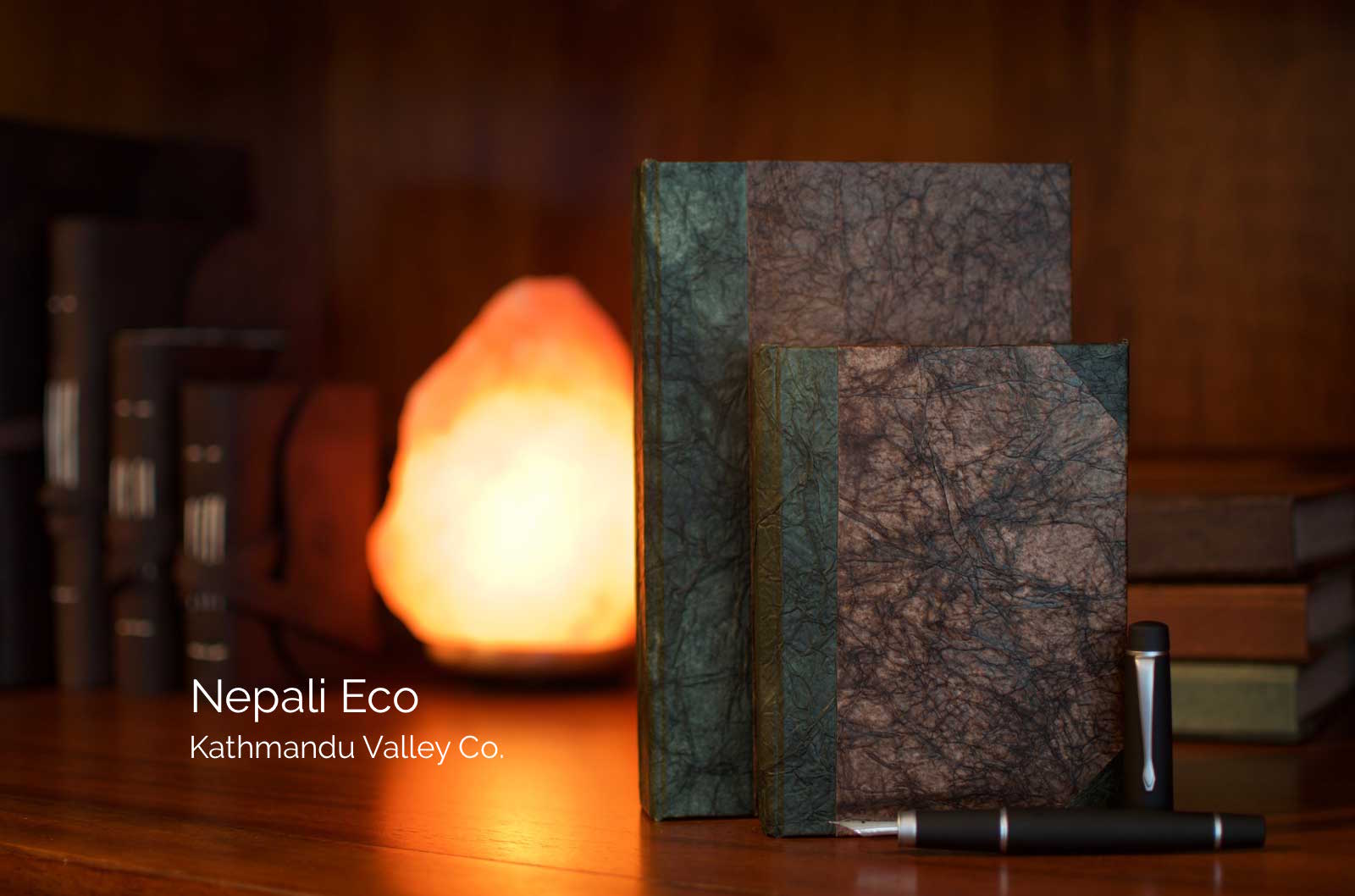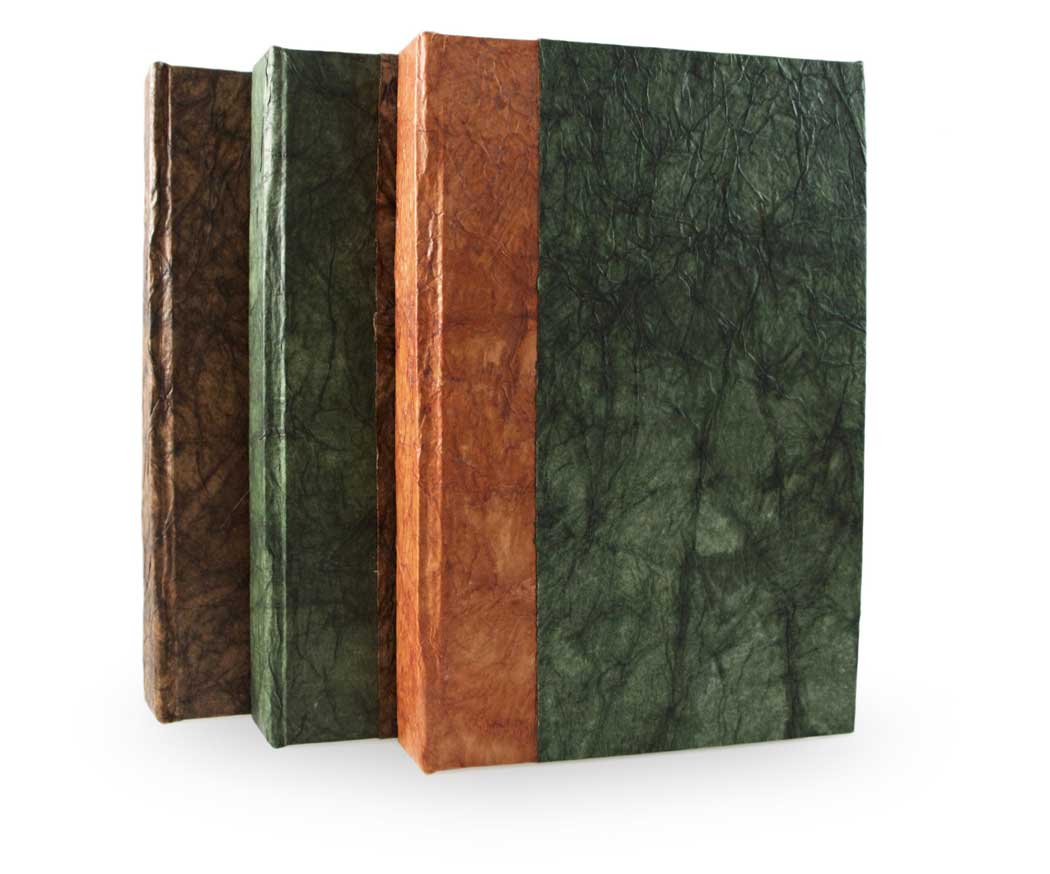Nepali Eco Journal
Capture Your Adventure
Nepali Eco Journal
(Deckle-Edged)
Return to the basics with a hand-crafted journal with pages handmade from the lokta bush. This non-tree, renewable source grows naturally on the southern slopes of the Nepali Himalayas between 5,250 and 13,000 feet above sea level.
When properly cut, lokta bushes can produce three to eight new, fast-growing shoots making lokta paper a very sought-after alternative to tree-based papers.

Great for Home or Abroad
Portability with Style
The Nepali Eco with Deckle-Edged Lokta Paper is available in two sizes:
5×8 inches
3×5 inches (with wingtip design)
Take it with you to the office or to catalogue an adventure in the wild.
For larger journals in a similar style, view our Nepali Eco Journals with clean-cut pages which are a larger 6×9 inches.

A 1,000-year-old Handmade Tradition
Nature’s Renewable Paper
A tradition of over 1,000 years in Nepal, our 100% Lokta paper is not treated with bleach like other papers and is hand made in rural, high altitude villages of Nepal.
The fibrous inner bark of the lokta bush is “cooked” into a pulp then spread on screens and sun-dried in the Himalayas. The beautiful texture from the process is characteristic of hand crafted lokta paper.
Lokta paper has a beautiful texture containing natural flecks from the bush and can vary slightly in thickness from page to page due to the unique handcrafting process.
Because the lokta bushes are not destroyed when cut, they grow back quickly, making them a sustainable and renewable paper source.

Tree-Free Paper
Lokta bushes grow on the southern slopes of the Himalayas of Nepal.

Vegetable-Dyed
Natural vegetable-dyes create the beautiful varity of colors in the covers.

Sustainable
Lokta bushes regrow quickly after being cut, regaining full height in 5-7 years.
![]() 96 Pages (192 Front/Back)
96 Pages (192 Front/Back)
The deckled-edges (similar to rough cut) are made by hand and add to the tradition style.
![]() Bleach and Acid Free
Bleach and Acid Free
Modern papers are bleached to gain brigtness, our paper is bleach free and acid-free and retains its natural color.


Handmade Color
The Colors of Nature
The cover coloring is produced with the traditional and vegetable plant-based dyes that have been used for hundreds of years.
No two journals will be the same. The vegetable dye process is not like using synthetic dyes which can match a specific color number every time.
The vegetable dyes we use are mixed by artisans, not machines, and the colors can vary from batch to batch making each journal a unique creation full of character and individual style.

The Forest Green journal is made from a combination of Indigo (blue) and Pomegranate (yellow from the pomegranate skins) mixed together creating a unique green color.
The coloring for the Dark Walnut Eco Journal comes from actual walnut husks which produce a rich dark-brown coloring. The walnut husk surrounds and protects the walnut seed and has been used as a natural dye for centuries.
The unique red of the Terra Cotta journal is made from sap extracted from Cutch wood. The wood is boiled removing the sap which is then dried into a resin to later be used for the coloring process.

Ready for Travel Anywhere
Both 5×8 and 3×5 Eco Journals have deckle edges and come with our 100% Standard Lokta Paper.
Both the 3×5 and 5×8 inch journals come in the following colors:
- Terra Cotta
- Forest Green
- Dark Walnut
Handmade Lokta Paper
Nepali Eco Deckle-Edge
Include the Nepali Eco vintage notebook in your next adventure.

Help Support Talented Nepalese Artisans
Thank you for helping to preserve a 1,000 year old tradition in Nepali paper making.
